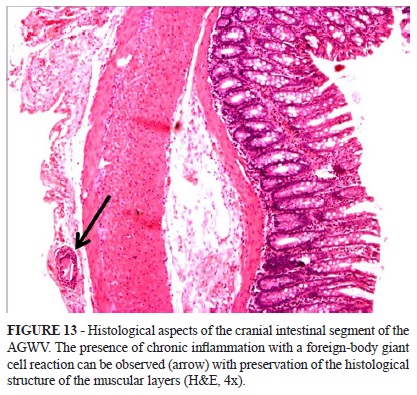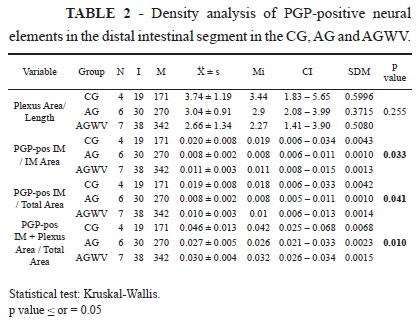PURPOSE: To investigate immunohistochemical aspects of the myenteric plexus of valves constructed in the colon of rats to verify whether any denervation occurs both at the operative site and in those areas adjacent to the third valve. METHODS: Thirty six male Wistar rats divided into the following three groups were used: Control Group (CG); Amputated Group (AG); Amputated Group with Valves (AGWV). In AG was held in the rectum amputation and the colon was sutured to the skin elaborating the perineal colostomy. In AGWV was held in the rectum amputation. A laparotomy was performed for the manufacture of valves (seromyotomy) in the colon. After this step, the colon was sutured to the skin elaborating the perineal colostomy. The density of the neural elements in the muscular wall as marked specifically using Protein Gene Product (PGP) 9.5 and utilising the proper tools of the KS300 software for measuring the area. From these measurements, a relation and three proportions were drawn and analysed according to the mean of the averages obtained from the measured images. RESULTS: Immunoexpression of PGP 9.5 demonstrated a total absence of neural elements and myenteric plexus at the valve site. The density of the neural elements in the circular muscular layer at sites adjacent to the 3rd valve was lesser, however, was not significantly different. CONCLUSION: The immunohistochemical study of valves constructed in the colon of rats submitted to abdominoperineal amputation and perineal colostomy revealed denervation at the seromyotomy site.
Amputation; Colostomy; Myenteric Plexus; Colorectal Surgery; Immunohistochemistry; Rats
















